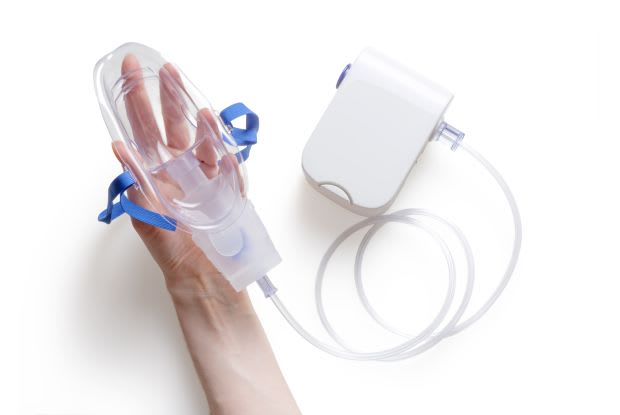Table of Contents
V. Medications and Treatment Options
What is Asthma?
Asthma is a common lung disease that can affect people of all ages. It causes swelling in the airways, making the airways narrow and produce excess mucus. The trademark symptom of asthma is the wheezing that occurs when the narrowed airways make it difficult to breathe.
Asthma isn’t always serious, and for many people, asthma is nothing more than a minor annoyance. Others may have severe asthma and experience life-threatening asthma attacks. Regardless of the severity of your symptoms, asthma treatment medications like Flovent are recommended to keep asthma under control.
Several factors can contribute to the development of asthma; this lung condition is the result of a combination of occupational, environmental, and genetic factors. If asthma runs in your family, or you have a genetic tendency to develop certain allergies (atopy), you may be prone to developing asthma.
But not all asthma stems from allergic reactions. Air pollution and exposure to airborne chemical substances can damage the lungs and lead to a viral lung infection. Those who work hands-on jobs may be subjected to different fumes, wood debris, mold, or second-hand smoke—all of which can irritate the lungs and cause asthma. If you have asthma, you may not experience symptoms constantly. Instead, you will likely have asthma-free periods interrupted by asthma attacks and flare-ups. Asthma attacks can be triggered by physical activity (exercise-induced asthma) or allergies. Part of your asthma treatment will be to identify and avoid your triggers. Read on to learn more about the different types, symptoms, and treatment options for asthma. [1] Not everyone who has asthma will experience the same symptoms. Several asthma symptoms overlap with other lung conditions such as COPD. Generally, common asthma symptoms may include: These symptoms are generally manageable with an asthma inhaler, but you should see your doctor any time your symptoms worsen. Your asthma may be worsening if you experience: Symptoms of asthma also tend to change over time. It’s important to regularly discuss your symptoms with your doctor so that your treatment stays up to date and adapts to new symptoms. Living with asthma requires continuous monitoring for long-term control. [2] It is easier to manage asthma symptoms if you know the type of asthma affecting you. Treating the underlying cause is the most effective way of relieving symptoms. Asthma is typically divided into the following categories: Diagnosing asthma involves several steps. At your appointment, your doctor will start by asking you a series of questions to understand your personal and medical history. You will likely be asked about the symptoms you have been experiencing recently, including any insight into your lifestyle habits and how they may be contributing to your condition. Your doctor will then take your answers and determine if you are at risk of asthma. Certain conditions, such as eczema, may make an asthma diagnosis more likely. Your doctor will move on to a physical exam if they think you likely have asthma. A physical exam typically involves inspecting the ears, nose, eyes, skin, throat, and chest area. Depending on the situation, your doctor may also order an X-ray of your lungs and sinuses. Following a physical exam, your lung function may be put to the test. The following tests may be administered: If an asthma diagnosis is confirmed, it is important to know your options for treatment. Asthma medications are usually categorized as long-term, quick-relief, anti-inflammatory, and allergy medications. Inhaled corticosteroids are a common type of medication used for long-term symptom control. Long-term asthma medications need to be taken regularly to control chronic symptoms and prevent asthma attacks. Long-term asthma treatments are considered the most important for managing symptoms. Quick-relief inhalers like Atrovent are taken as needed to treat asthma attacks. This type of rescue medication should always be carried on your person for emergencies. If you have allergic asthma, you may be prescribed medications to reduce your body’s sensitivity to your triggers. [8] Most asthma medications need to be combined with lifestyle adjustments to maximize their effectiveness. Living with asthma can be difficult, but the right medications and treatment plan can make it easier. Long-term control of your asthma symptoms can get you right back into doing the activities you love most. Speak with your doctor today about your lung health. The content in this article is intended for informational purposes only. This website does not provide medical advice. In all circumstances, you should always seek the advice of your physician and/or other qualified health professionals(s) for drug, medical condition, or treatment advice. The content provided on this website is not a substitute for professional medical advice, diagnosis, or treatment.
Symptoms of Asthma

Types of Asthma
Diagnosing Asthma

Medications and Treatment Options
